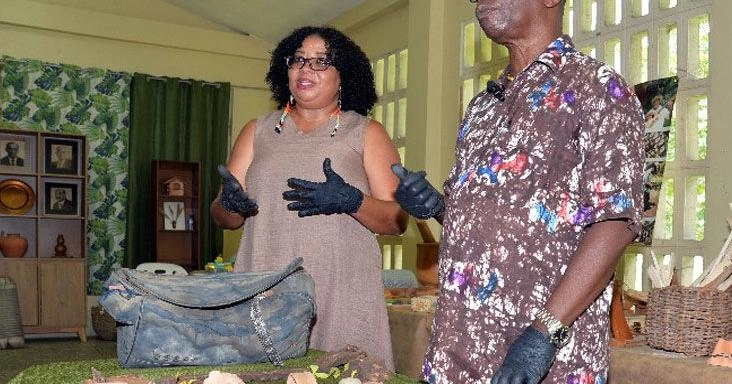GENERAL manager of Carvalho Agencies and Trinidad and Tobago Sightseeing Tours Charles Carvalho believes that there is a clear market for community-based and heritage/historical tourism in Trinidad, and points to Lopinot as a standout example.
In a telephone interview on Tuesday, Carvalho said destinations like the Lopinot Historical Complex offer unique cultural and historical value for cruise ship passengers. However, he noted the challenge lies in making the experience affordable and accessible from the tour operators side.
A file photo of a cruise ship docked in Port of Spain.
The transportation element of it could be costly, so we need to find a way to put something in place, Carvalho explained.
He said his company has been exploring ways to bridge the gap between the Port of Spain cruise ship terminal and Lopinot without driving up tour prices.
Carvalho confirmed that the logistics could not be worked out in time for the current cruise ship season, which opens in November and runs until April. Instead, he said the aim is to launch Lopinot and other cultural and heritage/historical sites as options for the next cruise season.
The comments by Carvalho follow an interview with Donna Mora, the CEO, curator and certified chocolatier of the Lopinot Historical Society, who emphasised that the valley has much to offer visitors.
At the Historical Complex in Lopinot, while Mora appealed to a grand descendant and archaeologist of the cocoa estate to return artefacts he had unearthed, she renewed her yearslong call to bring cruise ship passengers to Lopinot.
She said her efforts had yet to bear fruit, but pointed out that the restored cocoa estate of Charles Joseph, Count de Lopinot, along with the areas historical caves and rivers, had been attracting visitors for many years.
Mora noted that the National Trust of Trinidad and Tobago has been lobbying for years to have Lopinot Valley designated a United Nations World Heritage Village. No other place in the world has a cocoa house on top of an Anglican church, she said, adding that the valley boasts other unique sites.
Even without cruise ship passengers, Mora said Lopinot had welcomed about 75,000 visitors so far this year, up from about 50,000 in 2023 and 60,000 in 2022.
Before Covid-19, she said, the numbers were much higher, but the pandemic caused a steep drop to just a few thousand. Most current tours, she explained, come from local schools, with foreign universities accounting for the rest. Around 65% of visitors are local, with the United States topping the list of foreign markets.
In speaking about the folklore and storytelling aspect of the village, Mora highlighted with concern that traditional tales about the douen and the La Diablesse have been rapidly vanishing from local memory. Big, big men in their 30sthey dont know what is a douen. They have never heard about the La Diablesse, she said.
Mora continues to pass on these stories taught to her by her father, Martin Gomez, through dramatisation and historical interpretation.
She has also collaborated with foreign researchers, including a Canadian university student whose award-winning thesis on Lopinot folklore was turned into a film recognised by several Canadian universities.
The Lopinot area, she said, is also rich in natural attractions, including 12 cavesthough only six remain accessible.
Artefacts such as 200-year-old Dutch black bottles found in Devils Hole suggest it was once used as a social refuge by enslaved Africans.
The Lopinot Historical Complex employs 19 people, 95% of them from the village. Mora says this local hiring strengthens community ties while protecting the heritage.
Mora thanked the previous administration for upgrading the complex at a cost of $17 million and called for continued oversight, improved signage, and more training for guides, especially for cave tours.
While Mora focuses on attracting more visitors and preserving intangible culture, historian and Caribbean Freedom Project co-director Dr Claudius Fergus said he wanted to ensure the valleys history was presented with accuracy and respect.
According to Fergus, in 2021, the site removed a sign that critics from the Caribbean Freedom Project argued romanticised Count de Lopinot, the French planter who established the estate with enslaved labour in the early 1800s. Fergus said a replacement sign has been drafted to reflect the lived reality of the enslaved and the nature of the plantation system.
Together with Caribbean Freedom Project executive director Shabaka Kambon, he has secured a list of the enslaved people who once lived and worked at Lopinot. They intend to present it for permanent public display. We have created a replacement sign text that reflects the true history of the site, the nature of the plantation owners, and the experiences of the enslaved, Fergus said. The list, Fergus said, came from a descendant of the estates founder, Count de Lopinot. Both Fergus and Kambon want the names engraved in stone, similar to the memorial at The UWIs Cave Hill campus in Barbados, where a stone book records the enslaved up to Emancipation.




